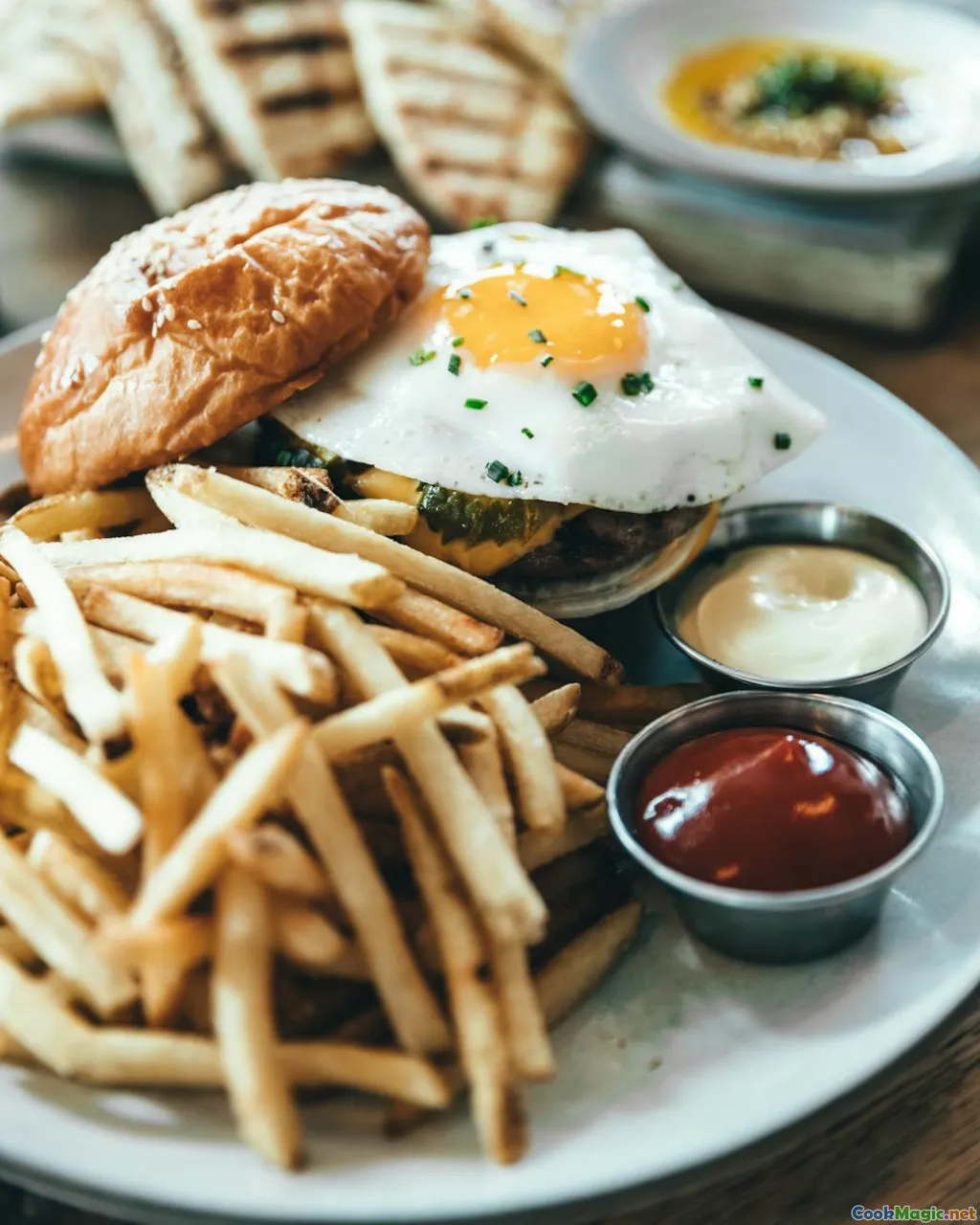Mastering the Art of French Sauce Making
8 min read Discover the timeless techniques and rich traditions behind French sauces, elevating your cooking with authenticity, depth, and culinary finesse. May 29, 2025 03:00
Mastering the Art of French Sauce Making
Imagine a kitchen filled with the intoxicating aroma of butter, herbs, and simmering stock. The gentle simmering of a sauce can transform simple ingredients into a symphony of flavors that elevate any dish. French cuisine, revered worldwide for its sophistication and depth, owes much of its elegance to the mastery of sauces. These culinary treasures are not merely condiments but are considered an essential art form, reflecting centuries of history, culture, and culinary innovation.
The Cultural and Historical Significance of French Sauces
French sauces are more than just accompaniments; they are an integral part of the country’s gastronomic identity. Dating back to the Middle Ages, the evolution of French sauces mirrors the history of French cuisine itself—rich, diverse, and refined.
In medieval France, sauces were primarily used to mask the flavors of preserved foods and to add moisture to dry meats. As culinary techniques advanced during the Renaissance, sauces became more sophisticated, incorporating ingredients like wine, cream, and herbs. The 17th and 18th centuries saw the codification of many classic sauces, with renowned chefs like La Varenne and Carême laying the groundwork for modern French cuisine.
Today, mastering French sauces symbolizes culinary mastery and respect for tradition. They serve as a canvas for chefs and home cooks alike, allowing creativity within the framework of time-honored techniques.
The Foundations of French Sauce Making
Basic Techniques and Principles
French sauce making is rooted in a few fundamental techniques:
- Reduction: Simmering liquids to concentrate flavors and thicken the sauce.
- Emulsification: Combining ingredients like oil and vinegar or butter and stock to create stable mixtures.
- Deglazing: Using liquids to dissolve flavorful browned bits stuck to the pan.
- Binding: Thickening sauces with roux, beurre manié, or egg yolks.
Understanding these techniques is vital. They are the building blocks of countless classic sauces.
Essential Ingredients
A well-stocked French pantry includes:
- Butter and cream for richness
- Stock (chicken, beef, fish) for depth
- Herbs (tarragon, parsley, thyme) for aroma
- Aromatics (shallots, garlic, onions)
- Flour or cornstarch for thickening
- Wine and vinegar for acidity and complexity
Equipment and Tools
Precision and patience demand good tools:
- Saucepan and sauté pan
- Whisk and wooden spoons
- Fine-mesh strainer
- Thermometer
- Roux whisk
Mastery also involves understanding how to control heat and timing—crucial for preventing sauces from breaking or curdling.
Classic French Sauces: A Deep Dive
1. Béchamel – The Queen of Sauces
Often called the mother of all white sauces, béchamel is a simple yet versatile base. Made from butter, flour, and milk, it’s the foundation for countless dishes like gratins and creamy soufflés.
Preparation tip: Cook the roux until it just starts to turn golden to eliminate raw flour taste.
2. Espagnole – The Rich Brown Sauce
A complex sauce built from a dark roux, tomatoes, and a mixture of beef or veal stock, espagnole is the backbone of many brown sauces and gravy.
Personal insight: Developing a deep, nutty flavor requires patience—slowly cooking the roux until it reaches a deep brown hue.
3. Velouté – The Silky Stock-Based Sauce
Made from a light roux combined with white stock (chicken, fish, or veal), velouté serves as a base for sauces like sauce supreme or sauce allemande.
4. Hollandaise – The Emulsified Egg Sauce
A delicate emulsion of egg yolks, melted butter, and lemon juice, hollandaise is iconic for eggs Benedict and steamed vegetables. Achieving the perfect silky texture demands gentle heat and constant whisking.
Tip: Use a double boiler or a heatproof bowl over simmering water to prevent curdling.
5. Tomato Sauce – The Rustic Classic
Combining ripe tomatoes, aromatics, and herbs, French tomato sauce varies from simple to elaborate, often enriched with vegetables or meats.
6. Bordelaise – The Wine-Infused Elegance
Made with red wine, shallots, and demi-glace, bordelaise pairs beautifully with grilled meats, showcasing the French love for wine-infused flavors.
The Art of Balancing Flavors
French sauces excel because they balance acidity, sweetness, saltiness, bitterness, and umami. Achieving harmony requires tasting at every stage and adjusting seasoning meticulously.
Personal Stories and Anecdotes
Growing up in a small Provençal village, I learned the art of sauce making from my grandmother, a legendary cook whose sauces were the soul of every family meal. I remember the first time I successfully made a beurre blanc—an ethereal, tangy butter sauce that seemed to dance on my palate. That moment ignited my passion for French culinary techniques, revealing that patience and respect for tradition could transform simple ingredients into culinary poetry.
Modern Interpretations and Creative Twists
While traditional sauces are revered, contemporary chefs often experiment—adding a splash of balsamic vinegar to enrich a classic tomato sauce or blending herbs into a velouté for unique flavors. These innovations honor tradition while embracing creativity.
Practical Tips for Aspiring Sauce Masters
- Start simple: Master basic sauces before progressing to complex ones.
- Use quality ingredients: Fresh herbs, good butter, and rich stock make a noticeable difference.
- Taste constantly: Adjust seasoning and acidity to achieve perfect balance.
- Control heat: Too high can cause breaking; too low prolongs cooking.
- Practice patience: Good sauces often require slow, deliberate cooking.
Conclusion: Elevate Your Culinary Journey
Mastering French sauce making is more than a culinary skill; it’s an art form that connects us to centuries of tradition, culture, and passion. With patience, precision, and a love for flavors, you can transform everyday dishes into extraordinary experiences. Whether draping a tender steak with a velouté or spooning a rich béchamel over vegetables, the mastery of these sauces unlocks a new level of culinary confidence and artistry.
Embrace the process, savor each step, and let the timeless elegance of French sauces inspire your cooking adventures. Bon appétit!









